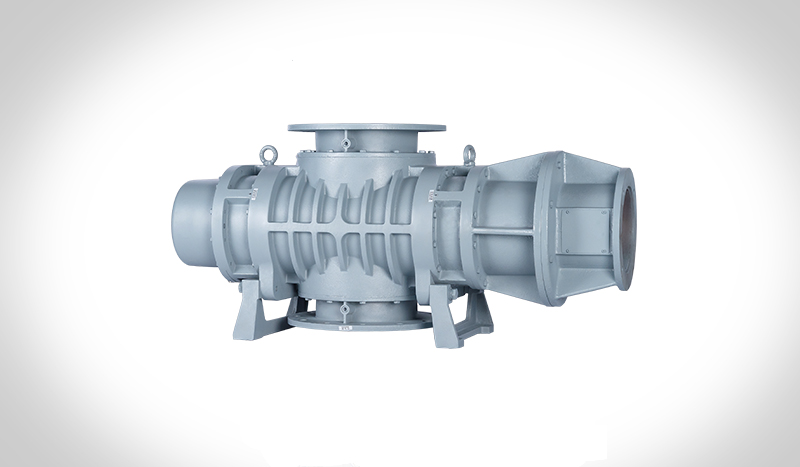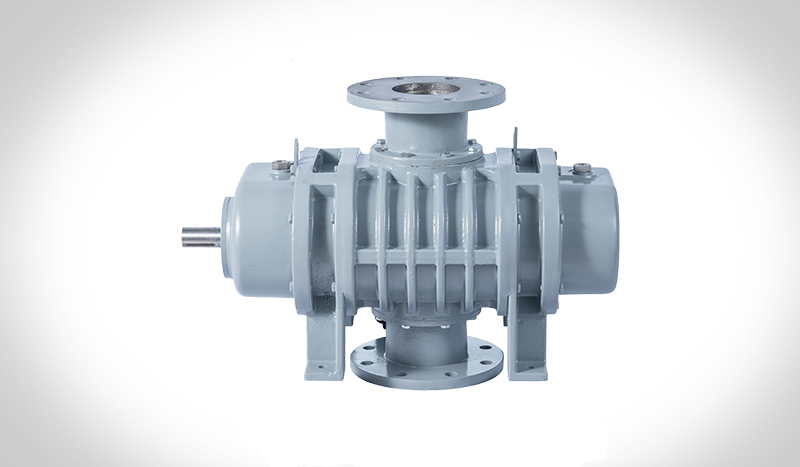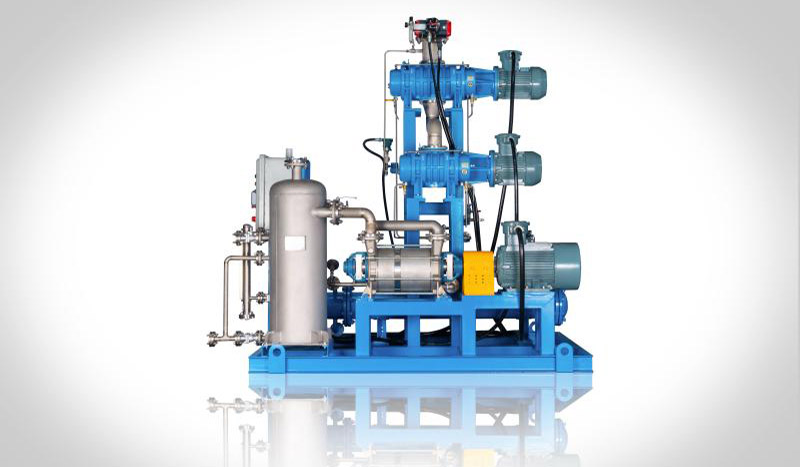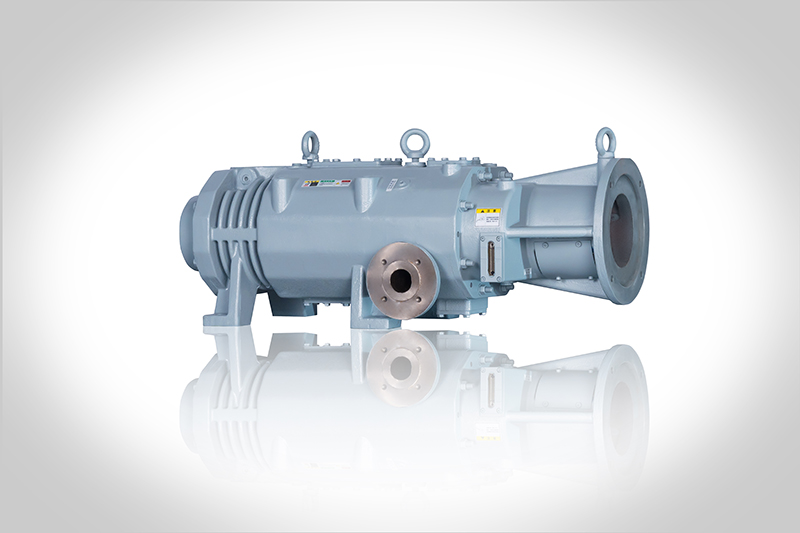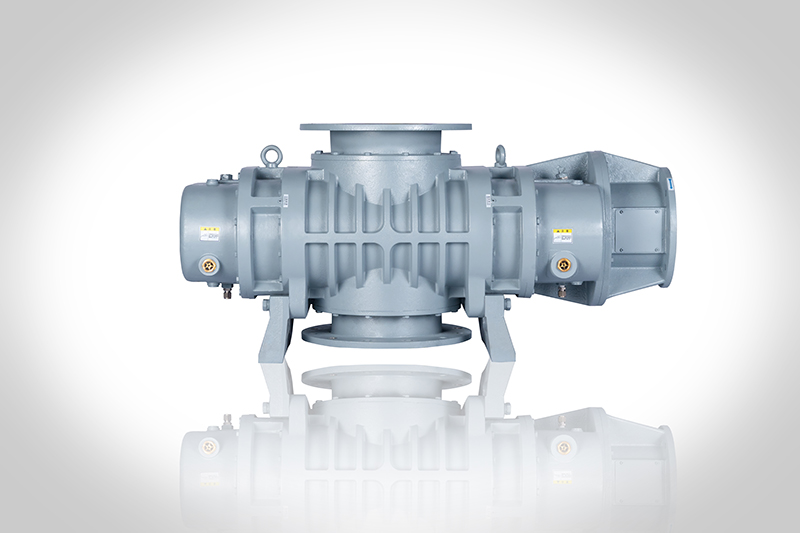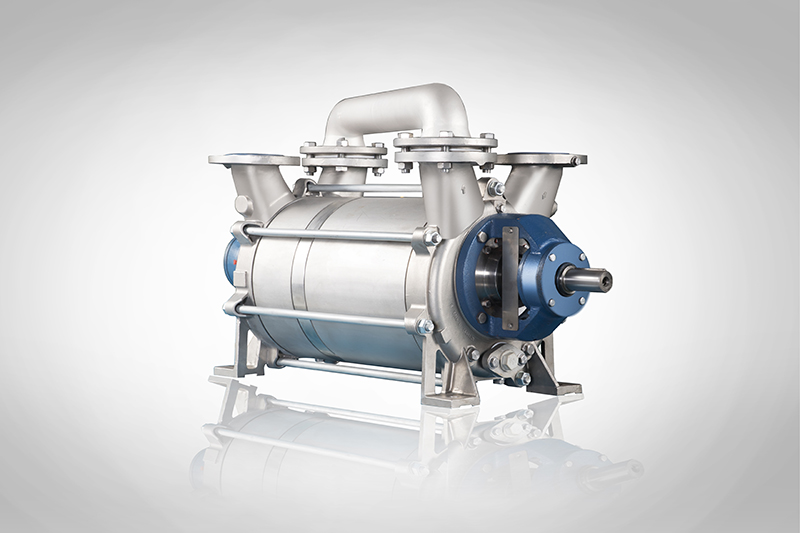Blog
What is Positive Displacement Pump: All You Need to Know
Positive displacement pumps play a crucial role in a myriad of industries due to their unique capabilities. These pumps are designed to move a fixed amount of fluid with each cycle, offering advantages in scenarios where a consistent flow is required. By contrast, centrifugal pumps rely on a spinning impeller to generate flow. The key differentiator lies in the pumping action; positive displacement pumps deliver liquid at a constant flow regardless of changes in pressure, making them ideal for applications with varying viscosity levels or where precise fluid control is essential. Understanding the nuances of positive displacement pumps is fundamental to harnessing their efficiency in diverse industrial settings.
What is Positive Displacement Pumps
Positive displacement pumps are specifically designed to handle viscous fluids and provide a constant flow rate. Unlike centrifugal pumps that rely on rotational energy to move fluids, positive displacement pumps operate on the principle of trapping a fixed amount of fluid and forcing it into a discharge pipe.
The main advantage of positive displacement pumps is their ability to handle viscous fluids efficiently. Viscosity refers to the thickness or resistance to flow of a fluid. Many industrial processes involve viscous fluids, such as oil, paint, and resin. Positive displacement pumps are specifically designed to handle these fluids, ensuring a smooth and constant flow rate.
The flow rate of a positive displacement pump remains constant regardless of changes in system pressure. This is because these pumps operate by trapping a fixed amount of fluid and moving it mechanically through the system. As a result, positive displacement pumps are ideal for applications that require precise flow control, such as metering or dosing applications.
In addition to their ability to handle viscous fluids and provide a constant flow rate, positive displacement pumps offer other advantages as well. These pumps can handle different viscosities, from low to high, without compromising efficiency. They are also capable of operating at higher pressures and flow rates without a significant impact on their capacity.
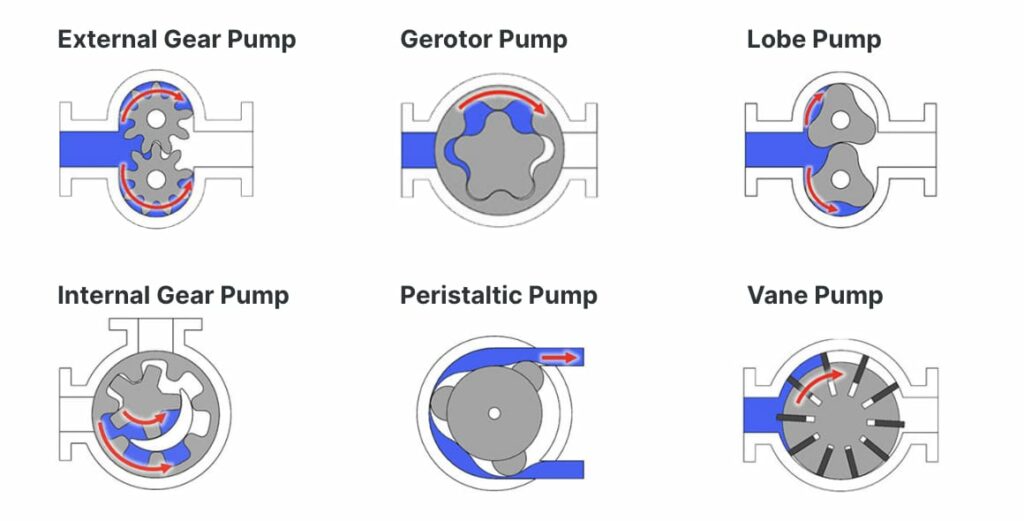
Defining Positive Displacement Pumps
Positive displacement pumps can be further categorized into different types, each with its own unique features and benefits. One such type is rotary positive displacement pumps.
Rotary positive displacement pumps operate by using a rotating mechanism to create a vacuum that draws in and captures fluid. There are several common examples of rotary positive displacement pumps, including gear pumps, screw pumps, vane pumps, peristaltic pumps, rotary lobe pumps, and progressive cavity pumps.
The pump casing is an important component of rotary positive displacement pumps. It houses the rotating mechanism and provides support and protection to the internal components. The design of the pump casing ensures that the pump operates efficiently and effectively.
The pump casing is typically made of durable materials such as cast iron or stainless steel to withstand the pressures and forces generated during the pumping process. It is designed to contain the fluid being pumped and direct it towards the discharge port.
In addition to providing structural support, the pump casing also plays a role in minimizing leaks and preventing fluid from escaping during the pumping process. Seals and gaskets are used to ensure a tight seal between the pump casing and the rotating mechanism, further enhancing the efficiency and reliability of the pump.
Basic Working Principle of Positive Displacement Pumps
The basic working principle of positive displacement pumps involves the generation of high pressure through a pumping action that moves a fixed amount of fluid.
Positive displacement pumps operate by trapping a certain amount of fluid within the pump and transferring it to the discharge port. This trapping and transfer mechanism allows positive displacement pumps to maintain a constant flow rate regardless of changes in system pressure.
In a reciprocating positive displacement pump, such as a piston pump or a diaphragm pump, the pumping action is achieved through the back-and-forth movement of either a piston, plunger, or diaphragm. The first stroke of the pumping action creates a vacuum, which opens an inlet valve and draws fluid into the pump. As the motion reverses, the inlet valve closes, and the fluid is compressed and discharged through the outlet valve.
In a rotary positive displacement pump, such as a gear pump or a screw pump, the pumping action is achieved through the rotation of gears or screws. The rotation of these components creates a vacuum that draws in and captures fluid, which is then transported to the discharge port.
Regardless of the specific type of positive displacement pump, the fundamental principle remains the same: a fixed amount of fluid is trapped and transferred, creating a constant flow rate and generating high pressures. This working principle makes positive displacement pumps suitable for applications that require precise flow control and the handling of viscous fluids. By understanding the basic working principle of positive displacement pumps, users can make informed decisions about their suitability for specific industrial applications.
Types of Positive Displacement Pumps
Positive displacement pumps come in various types, each tailored for specific applications. One common type is the Rotary Positive Displacement Pump, known for its efficient and consistent flow. Another type is the Progressive Cavity Pump, ideal for handling viscous fluids like in food processing or wastewater treatment. These pumps operate by trapping a fixed amount of fluid and displacing it through the system. Their design ensures a constant flow regardless of pressure changes, making them suitable for a wide range of industrial applications. Understanding the key differences between these types is crucial in selecting the right pump for the intended use.
Screw Pump
Screw pumps are a type of rotary positive displacement pump that operate using two or more intermeshing screws to move fluid along the screw’s axis. These pumps are known for their ability to handle high viscosity fluids efficiently and are commonly used in industrial applications where a constant and consistent flow rate is required. The screw pump design minimizes shear forces, making them suitable for pumping delicate or shear-sensitive fluids.
Roots Vacuum Pump
Roots vacuum pumps operate on two meshing rotors with minimal clearance between them. These pumps are known for their ability to efficiently handle large volumes of gas at low pressure. They are widely used in applications where high flow rates are essential, such as in industries requiring rapid evacuation of large systems. Roots vacuum pumps are crucial for maintaining vacuum levels in processes like vacuum distillation, semiconductor manufacturing, and vacuum packaging to ensure optimal performance and efficiency.
Diaphragm Pump
Diaphragm pumps are a type of positive displacement pump that utilize a flexible membrane to move fluids. They are often used in applications where maintaining the purity of the fluid is critical, such as in the food processing and pharmaceutical industries. These pumps offer gentle pumping action, making them suitable for shear-sensitive fluids. Diaphragm pumps can handle a wide range of viscosities and provide consistent flow rates, making them reliable choices for various industrial applications.
Liquid Ring Vacuum Pump
Utilizing liquid for sealing and compression, the liquid ring vacuum pump operates with minimal frictional losses and can handle both liquid and gas mixtures efficiently. With its ability to handle hazardous fluids and provide a constant flow, this type of positive displacement pump finds extensive use in chemical processing and wastewater treatment applications. The spinning impeller creates the necessary vacuum for suction, making it a reliable choice for industries requiring high flow rates and low shear.
Key Components of Positive Displacement Pumps
The key components of positive displacement pumps include the pump casing, drive mechanism, seals, and valves. The pump casing houses the pumping action, ensuring the contained fluid is efficiently moved through the system. The drive mechanism generates the necessary rotary or reciprocating motion to propel the fluid. Seals and valves play crucial roles in maintaining the pressure and directing the flow within the pump, contributing to its overall efficiency and reliability.
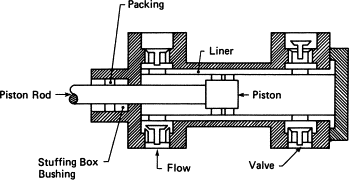
The Pump Casing
The pump casing is a crucial component in positive displacement pumps, encasing and protecting the internal parts. It houses the pumping mechanism securely, maintaining the pressure within. This casing plays a vital role in containing the fluid being pumped and directing it towards the discharge port efficiently. The design and material of the casing are significant factors affecting the pump’s performance and durability, ensuring seamless operation in various industrial applications. Understanding its functionality is essential for optimal pump efficiency.
The Drive Mechanism
In positive displacement pumps, the drive mechanism plays a crucial role in the pump’s operation. It converts the input energy into mechanical power to drive the pumping action. Various types of drive mechanisms are used, including electric motors, engines, and even manual operation in some cases. The drive mechanism ensures the rotation or reciprocating motion of the pump’s components, facilitating the movement of fluid through the pump system efficiently.
Seals and Valves
Positive displacement pumps rely on seals and valves to maintain pressure and control the flow of fluid efficiently. Seals prevent leakage between the moving parts, ensuring the pump operates smoothly, especially when handling high viscosity liquids. Valves play a crucial role by regulating the direction of flow within the pump, optimizing performance and preventing backflow. Proper maintenance of seals and valves is essential to prevent any disruptions in the pumping process and to ensure the longevity of the pump system.
Advantages of Positive Displacement Pumps
Positive displacement pumps excel in handling viscous fluids with high efficiency. They offer precise flow measurement, crucial in various industries. These pumps provide a constant flow, ideal for applications requiring consistency. Their design minimizes frictional losses, making them perfect for high viscosity liquids. Additionally, positive displacement pumps are efficient in low flow and high-pressure situations, outperforming centrifugal pumps in these conditions. Their ability to maintain a steady flow rate sets them apart in industries such as food processing and wastewater treatment.
High Efficiency in Viscous Fluids
Positive displacement pumps excel in handling viscous fluids due to their ability to maintain a consistent flow rate even with high viscosity liquids. The positive displacement action within these pumps ensures efficient transfer of thick substances, like oils or syrups, without causing shear damage. This characteristic makes them an ideal choice for industries dealing with viscous materials, such as food processing or chemical manufacturing, where maintaining product integrity is crucial.
Accurate Flow Measurement
Accurate flow measurement is crucial in various applications where precise monitoring is essential. Positive displacement pumps excel in providing consistent flow rates, making them ideal for scenarios requiring precision. By accurately measuring the flow, these pumps ensure that the desired volume is delivered efficiently. This reliability is especially critical in industries such as chemical processing and food production, where maintaining exact flow rates is paramount for operational success. Utilizing positive displacement pumps guarantees reliable and accurate flow measurement, contributing to enhanced process efficiency and product quality.
Limitations and Challenges
Pulsation and vibration issues can be challenges with positive displacement pumps. The maintenance and cost considerations associated with these pumps are significant. Proper maintenance is essential for sustained performance, and costs can be higher compared to centrifugal pumps due to their complex design and precision parts. Understanding these limitations can help in effectively managing and maximizing the efficiency of positive displacement pumps in various industrial applications.
Pulsation and Vibration Issues
Positive displacement pumps can encounter pulsation and vibration issues due to their mechanism, especially in high-pressure applications. These pumps inherently produce pulsating flow, leading to pressure fluctuations and potential vibrations, impacting system stability. Ensuring proper installation, maintenance, and the use of dampeners can help mitigate these challenges, enhancing the longevity and efficient operation of positive displacement pumps in various industrial settings. Understanding and addressing pulsation and vibration issues are crucial for optimizing pump performance and minimizing operational disturbances.
Maintenance and Cost Considerations
When it comes to maintenance and cost considerations for positive displacement pumps, regular upkeep is crucial to prevent costly breakdowns. Scheduled inspections of seals, valves, and drive mechanisms can optimize performance and extend the pump’s lifespan. Additionally, factoring in maintenance costs when selecting a pump type can save money in the long run. By addressing maintenance proactively, businesses can minimize unexpected expenses and ensure continued operational efficiency. Proper care and attention to maintenance schedules help in avoiding costly repairs and downtime.
Applications of Positive Displacement Pumps
Positive displacement pumps are used in a wide range of applications across various industries. They are particularly suited for pumping viscous fluids, such as oil, paint, and resin, at high pressures and low flow rates. Some common applications include:
- Oil processing centers
- Municipal sewage systems
- Manufacturing operations that process or produce thick or viscous materials
- Food and beverage production facilities
- Pharmaceutical plants
Each type of positive displacement pump has its own unique characteristics that make it ideal for specific applications. For example, lobe pumps have low shear and are easy to clean and sterilize, making them ideal for pharmaceutical and food processing. Diaphragm pumps, on the other hand, are self-priming and designed for low flows and high pressures, making them suitable for metering or dispensing oil and corrosive liquids.
In complex facilities, such as manufacturing and food processing plants, a combination of positive displacement pumps and centrifugal pumps is often used. This allows for the efficient handling of both thin and viscous fluids, ensuring smooth operations.
In the Oil and Gas Industry
Positive displacement pumps find extensive use in the oil and gas industry for their ability to handle high viscosity fluids and maintain a constant flow rate despite varying pressure conditions. From transferring crude oil to injecting chemicals for enhanced oil recovery, these pumps play a crucial role in various processes within the sector. Their efficiency in handling challenging fluids and delivering precise flow rates make them indispensable in oil refineries, offshore platforms, and pipeline operations.
Distillation
Petroleum cracking
Oil and gas recovery
Vapor Recovery
Vacuum degassing
VOC tail gas recovery
In the Food and Beverage Sector
Positive displacement pumps find extensive use in the food and beverage sector due to their ability to handle a wide range of viscosities and maintain a consistent flow. These pumps play a vital role in processes such as food processing, beverage production, and bottling, where precise fluid movement is crucial. Their gentle pumping action is ideal for handling delicate food products without altering their composition. In this industry, the right pump choice ensures efficiency in transferring various products, including sauces, creams, and beverages.
Vacuum Cooling
Freeze drying
Vacuum packaging
Pneumatic conveying
Choosing the Right Positive Displacement Pump
Factors to consider when choosing the right positive displacement pump include the viscosity of the fluid being pumped, the required flow rate, and the pressure conditions of the application. Matching the pump type to the specific needs of the operation is crucial for optimal performance. Understanding the characteristics of different types, such as rotary and reciprocating pumps, is essential in ensuring efficiency and reliability in various industrial applications. It’s vital to select a pump that can handle the demands of the job effectively.
Factors to Consider
When selecting a positive displacement pump, several factors must be considered. These include the viscosity of the fluid being pumped, the desired flow rate, pressure requirements, and the specific application environment. It’s essential to match the pump type to the intended use to ensure optimal performance and efficiency. Additionally, factors like maintenance needs, operational costs, and the availability of spare parts should also be taken into account when choosing the right positive displacement pump for a particular application.
Matching Pump Type to Application
Selecting the appropriate positive displacement pump for a specific application is crucial for optimal performance. Consider factors such as viscosity, flow rate requirements, and the nature of the fluid being handled. For high viscosity fluids, rotary positive displacement pumps like screw pumps are ideal, while diaphragm pumps are suited for applications requiring precise flow control. Understanding these distinctions ensures the right pump type is matched to the corresponding application.
Conclusion
In conclusion, positive displacement pumps play a crucial role in various industries due to their efficiency and accurate flow measurement capabilities. Understanding the types, components, advantages, limitations, and applications of these pumps is essential for choosing the right one for specific needs. Whether in the oil and gas sector or food and beverage industry, selecting the appropriate pump type based on application requirements is key. By considering factors like viscosity, flow rate, and maintenance costs, businesses can optimize their operations effectively. If you’re looking to invest in a positive displacement pump, request quotes from commercial providers to find the best fit for your operational needs.

